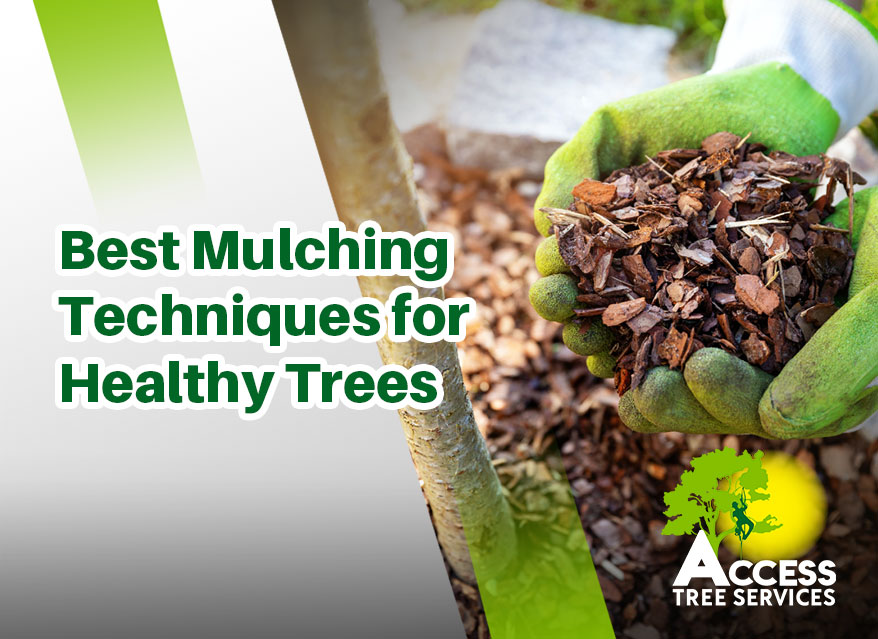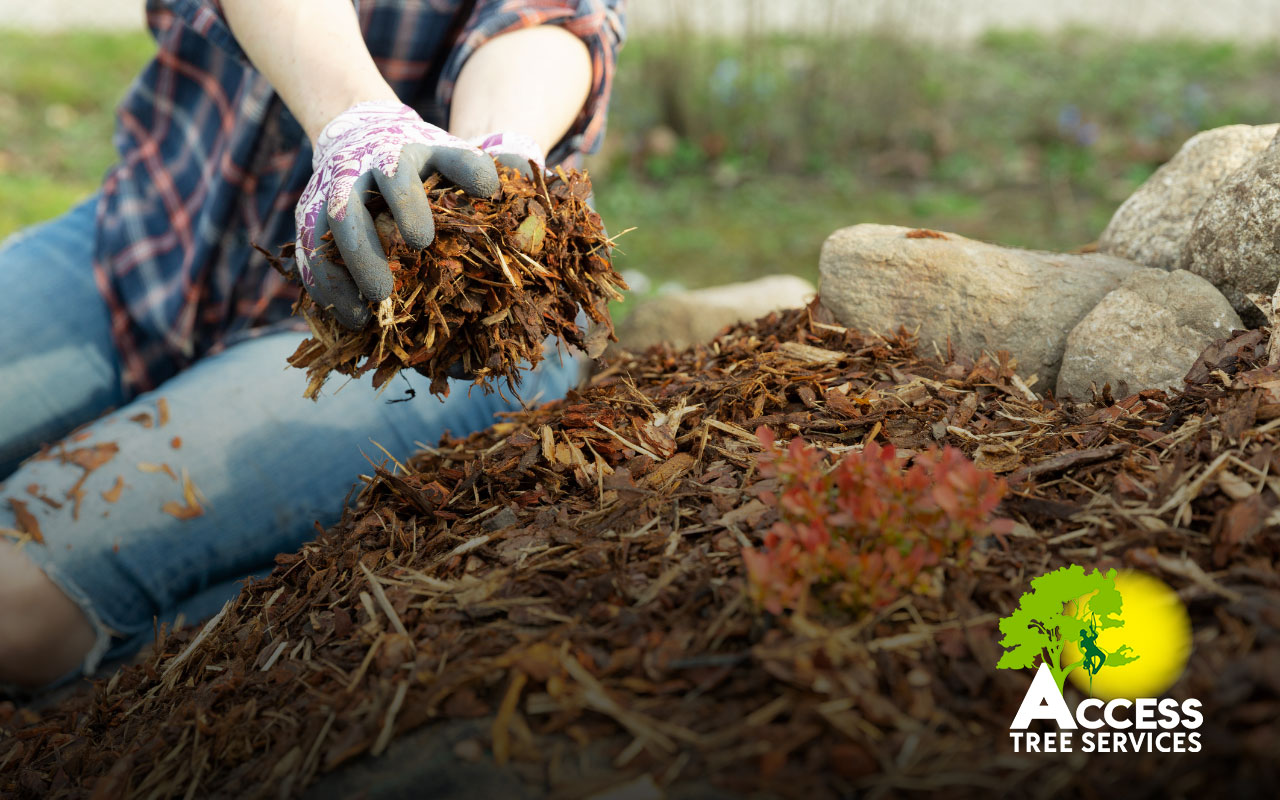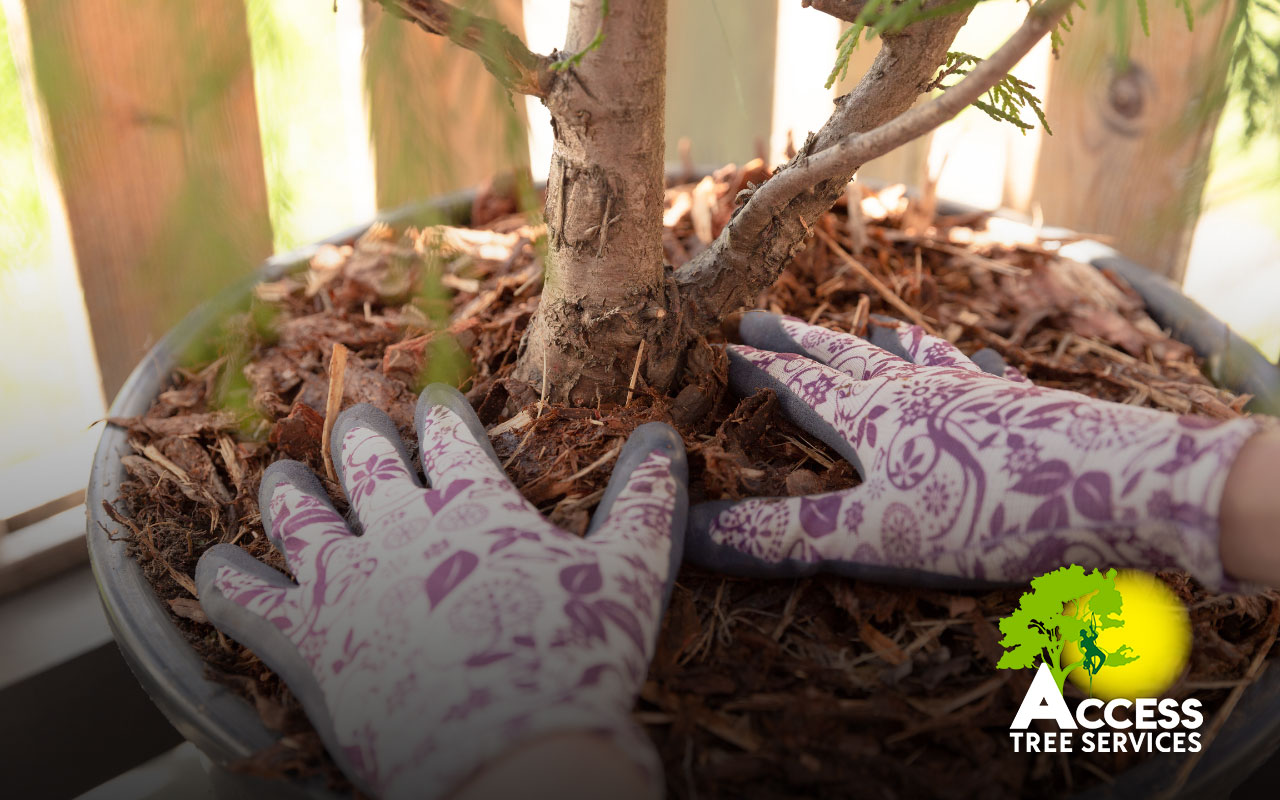
Are you employing the best mulching techniques to ensure your trees are as healthy? Mulching is more than just a garden chore; it’s an essential practice that enriches and protects your tree’s root systems. It facilitates better water retention, temperature control, and nutrient intake.
In this post, we’ll explore effective mulching methods that boost the health of all tree types.
Mastering the Best Mulching Techniques for Optimal Tree Health
Understanding the basics of mulching is crucial for anyone looking to improve the health of their garden. When done correctly, mulching conserves moisture, suppresses weeds, and enhances soil fertility. Let’s dive deeper into how these benefits are realized and why they’re vital for your trees.
Choosing the Right Mulch

Selecting the appropriate mulch is the first step toward healthy trees. Organic mulches, such as bark chips or shredded leaves, provide nutrients as they decompose. For ornamental trees, consider cocoa shells or decorative stones to add aesthetic appeal while conserving moisture.
Proper Mulching Techniques
Applying mulch might seem straightforward, yet many gardeners make common mistakes. Firstly, ensure the mulch layer is not too thick—about 2 to 4 inches is ideal. Secondly, mulch should be kept away from tree trunks to prevent rot and pest infestation.
Seasonal Mulching Tips
Seasonally adjusting your mulching approach can further enhance tree health. In spring, lighten the mulch to allow warm soil to wake dormant trees. Conversely, a thicker layer helps insulate roots from freezing temperatures in autumn.
Benefits of Mulching Beyond Health
Beyond tree health, mulching also aids in maintaining soil structure, reducing erosion, and preventing weed growth. It acts as a barrier, protecting soil from harsh weather conditions and maintaining a steady temperature.
Advanced Mulching Strategies
For those looking to improve their mulching, consider the timing and type of mulch used. Certain mulches perform better depending on tree species and local climate conditions. Researching specific needs can lead to even better results.
FAQ Section
- How often should I replace mulch around my trees?
Generally, replacing mulch annually is sufficient. However, monitor it throughout the year and add more to maintain proper depth.
- Can mulching help prevent tree diseases?
Mulch reduces the risk of soil-borne diseases affecting your trees by avoiding soil contact with tree foliage.
- What is the best mulch for young trees?
Young trees benefit most from organic mulches like wood chips, which, as they break down, improve soil structure and nutrient availability.
Environmental Impact of Mulching
Using sustainable and locally sourced mulches can also positively impact the environment, reducing the carbon footprint associated with transporting materials.
Mulching as Part of Integrated Pest Management

Incorporating mulching into your pest management strategy can reduce the incidence of pests by creating less hospitable conditions for them to thrive.
Incorporating these techniques will boost the health of your trees and enhance your garden’s overall ecosystem. With the proper practices, mulching can provide a solid foundation for your trees to thrive.
Secure the Health of Your Trees with the Best Mulching Techniques
This guide explores mulching techniques that boost trees’ health and beautify gardens. By adopting these practices, you can ensure your trees are well-nourished and protected throughout the year.
If you want to transform your landscape and ensure the health of your trees with professional care, don’t hesitate to contact us. Our expert team is ready to provide top-tier mulching services tailored to your garden’s needs.
